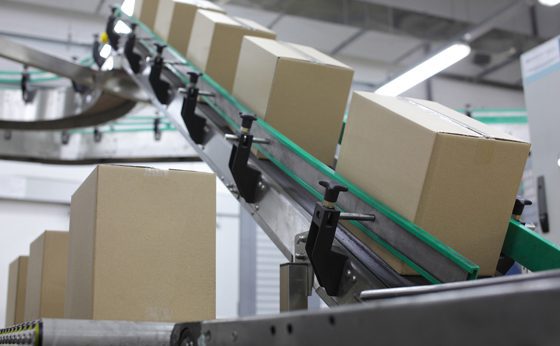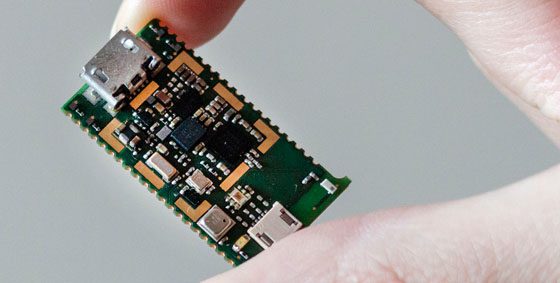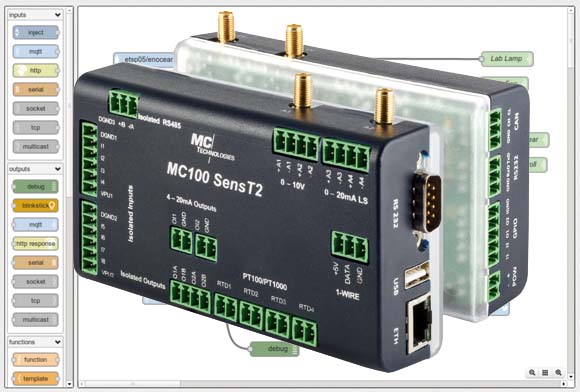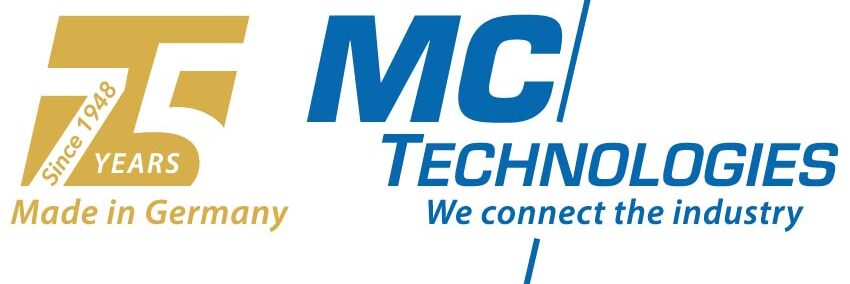MC100 and smart wireless sensors as a platform for IoT applications
Data is the foundation of any IoT application
Industry 4.0, IoT, predictive maintenance, condition monitoring – all buzzwords that can be seen and heard every day today in the relevant trade press, on the web, in business portals and in webinars. Nevertheless, many users in mechanical and plant engineering are unsure how they can fill these buzzwords with life and derive concrete use cases from them for their daily practice.
The basis for any IoT application is large amounts of digitized data. The more historical and current data is available for the machine or complete production plant to be monitored, as well as its environment, the better a concrete service measure or a recommendation for action for the operating personnel can be derived from it. Although we are only at the beginning of this digitization, it is foreseeable that this trend will continue and cover a broad spectrum of industrial and non-industrial applications. One of the challenges is to collect this data automatically and make it available in electronic, digital form.
How do I get this data and what data do I need?

In most cases, machine and production data are recorded by means of sensors. In the case of newly developed machines and plants, in the so-called greenfield, the required sensors are already planned in the development phase, depending on the use case to be implemented, and their data is fed to the central control system. Assuming sufficient computing power, they can be preprocessed and interpreted directly in the machine. Via corresponding dashboards on the local HMI or also on remote stations within the company network, the data prepared in this way can be visualized without great effort.
However, the situation is quite different in brownfield applications. In the manufacturing industry, you often find a very heterogeneous landscape of very different machines and systems, which in many cases are not connected to each other via a central network or an industrial fieldbus.
In addition, there are a wide variety of machine controls and HMIs that often do not have today’s common IT standards. Sensors for recording temperatures, pressures, vibrations or other ambient conditions are usually not available.
Let’s take the simple example of electric motors of a pump or a conveyor belt, as they are often found in almost every industrial application. If this simple component fails, the entire production chain often comes to a standstill and causes failures that exceed the value of the engine many times over. In order to be able to detect the impending failure and to replace the motor in good time in a planned maintenance action, simple sensors for temperature or vibration detection are usually already sufficient.

This is custom heading element

The retrofitting of wired sensor technology is often ruled out because the corresponding inputs on the control system are missing and retrofitting is associated with high costs. The integration into the control program is often not possible because the source code is completely missing or the last commissioning status was not documented. The solution is easily retrofittable wireless sensors and matching evaluation devices. And this is where the experts at MC Technologies, with decades of experience in M2M communication, come in.
For building automation, we have been offering our customers wireless sensors for measuring temperature, humidity or dust concentration for some time. The sensor data is collected via MC100 gateways using common standards such as Sigfox or wireless M-Bus, processed and sent to the customer’s server or to a cloud application via mobile networks such as LTE or, in the future, 5G.
With flexible and easy-to-configure IoT sensors, we are now expanding our solution portfolio for the harsh industrial environment. Here is a complete platform for measuring temperature, pressure, acceleration, humidity, brightness, air quality and many other parameters. The sensor data can be transmitted using Bluetooth LE or LoRaWAN, for example. Due to the low power architecture, the battery installed in the sensor has a service life of several years, depending on the application.
Alternative supply concepts, e.g. via solar cells, are also possible. In this case, a device from the MC100 system family again acts as the gateway. In the GPIO or SensT2 version, additional analog and digital I/O as well as fieldbus interfaces such as CAN or Modbus are available to the user in addition to the wireless technology onboard. In many cases, an MC100 can thus completely replace a typical PLC. A powerful ARM Cortex-A7 controller, 512 MB RAM and 4 GB flash memory enable extensive data processing already in the production environment as well as the use as edge device. OpenWRT Linux is used as the operating system. Using C/C++, Python, Java or Node-RED, both high-level languages and graphical programming and configuration options are supported.

